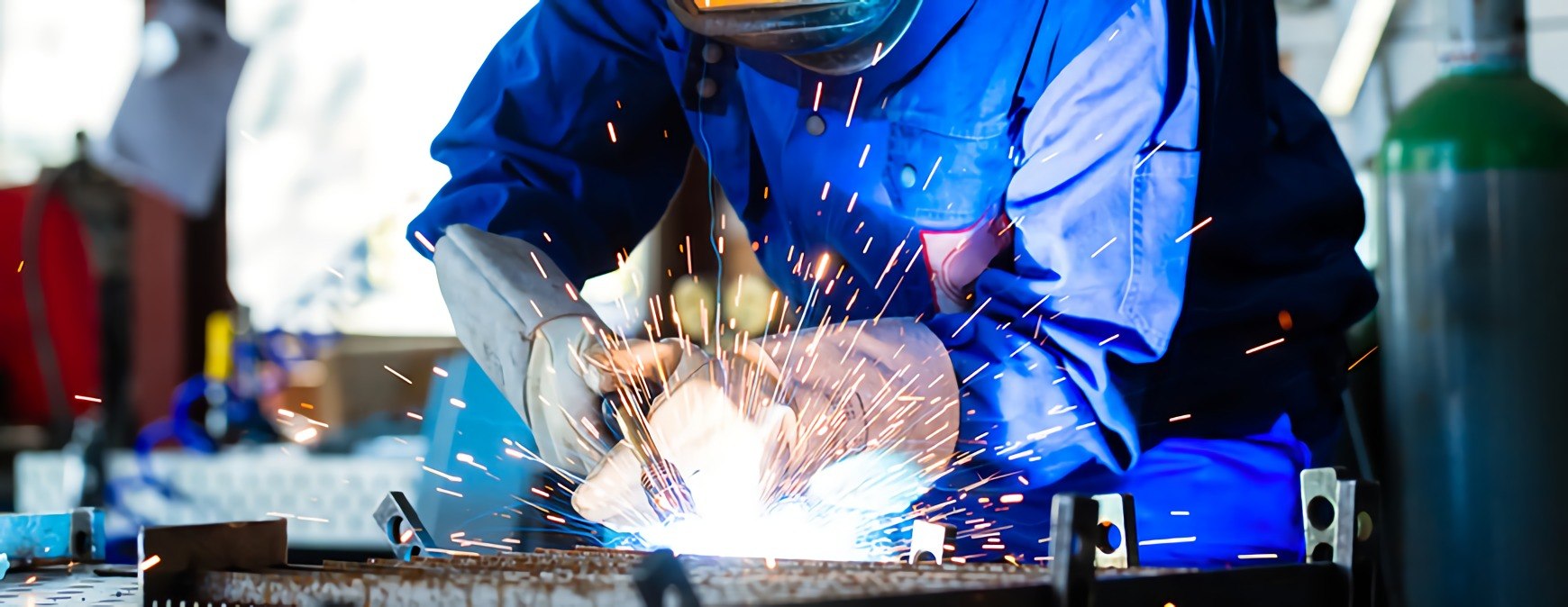Welding is the process of joining two or more metal parts by applying heat or pressure. This skill is critical in industries such as construction, manufacturing, and automotive engineering. Welding is more than just a trade; it is an art that requires precision, patience, and practice.

As a trade school student, learning the basics of welding lays the foundation for a rewarding career. This guide introduces the essential tools, popular techniques, and critical safety measures needed to begin your welding journey with confidence.
What is Welding?
Welding involves melting the edges of two metal parts and fusing them together, often with the help of a filler material. Once the melted area cools and solidifies, the two parts form a strong bond. Welded joints are commonly used in the construction of bridges, buildings, pipelines, and vehicles.
There are different types of welding, each suitable for specific materials and applications. Understanding these types and their requirements is the first step in becoming a skilled welder.
Common Welding Tools
Every welder needs a set of tools to perform their tasks effectively. Here are the most essential welding tools:
- Welding Machine: This is the primary tool that supplies the power to melt the metal and create the weld. Machines vary in type based on the welding method, such as MIG, TIG, or Arc welding.
- Electrodes: Electrodes conduct electricity and help in creating the weld. Depending on the welding process, electrodes can be consumable (melt during welding) or non-consumable.
- Protective Gear: Safety is paramount in welding. Welders must wear helmets with face shields, heat-resistant gloves, and protective aprons to prevent burns and injuries.
- Angle Grinder: Used to clean the surfaces before welding and to smoothen the welds after completion.
- Clamps and Magnets: These hold the workpieces securely in place, ensuring precise welding.
Having the right tools and knowing how to use them is key to becoming a successful welder.
Popular Welding Techniques
There are several welding techniques, each suited for different purposes. Let’s look at the most commonly used ones:
- MIG Welding (Metal Inert Gas): This method involves using a continuous wire feed as the electrode and shielding gas to protect the weld from contamination. It is widely used in automotive and manufacturing industries due to its speed and ease of use.
- TIG Welding (Tungsten Inert Gas): This technique uses a non-consumable tungsten electrode to produce precise and high-quality welds. It is ideal for thinner metals like stainless steel and aluminum.
- Arc Welding: Also known as SMAW (Shielded Metal Arc Welding), this process uses a consumable electrode covered with flux. It is one of the most versatile welding techniques and is commonly used in construction.
Learning these techniques not only expands your skills but also increases your employability in various industries.
Safety Measures for Welders
Welding involves high heat, electricity, and potentially hazardous fumes, making safety a top priority. Here are some essential safety practices:
- Always wear appropriate protective gear, including a welding helmet, gloves, and steel-toed boots.
- Work in a well-ventilated area to prevent the accumulation of harmful fumes.
- Inspect all tools and equipment before use to ensure they are in good working condition.
- Keep flammable materials away from the welding area.
- Follow proper procedures for handling and storing gas cylinders used in MIG and TIG welding.
Adhering to safety guidelines protects you from injuries and ensures a productive work environment.
Challenges Faced by Beginners
Starting as a welder can be intimidating. Beginners often struggle with maintaining a steady hand, setting the correct machine parameters, and ensuring clean welds. Overcoming these challenges requires consistent practice, seeking guidance from experienced welders, and staying updated with new techniques.
Many trade schools offer welding simulators to help students practice in a safe environment. These tools provide a realistic experience and allow learners to improve their skills before working with actual equipment.
Career Opportunities in Welding
Welding offers numerous career opportunities across various industries. In India, welders are in high demand in sectors like construction, shipbuilding, and automotive manufacturing. Skilled welders can also find employment abroad, where they may earn higher wages and benefits.
To advance in your career, consider obtaining certifications like AWS (American Welding Society) or CSWIP (Certification Scheme for Welding and Inspection Personnel). These qualifications validate your skills and open doors to better job prospects.
Conclusion
Understanding the basics of welding is the foundation for a successful career in this field. By mastering the tools, techniques, and safety measures, you can build confidence and excel in your craft. Remember, consistent practice and a commitment to learning are the keys to becoming a skilled welder.
So, put on your protective gear, fire up your welding machine, and start your journey to becoming a professional welder today!